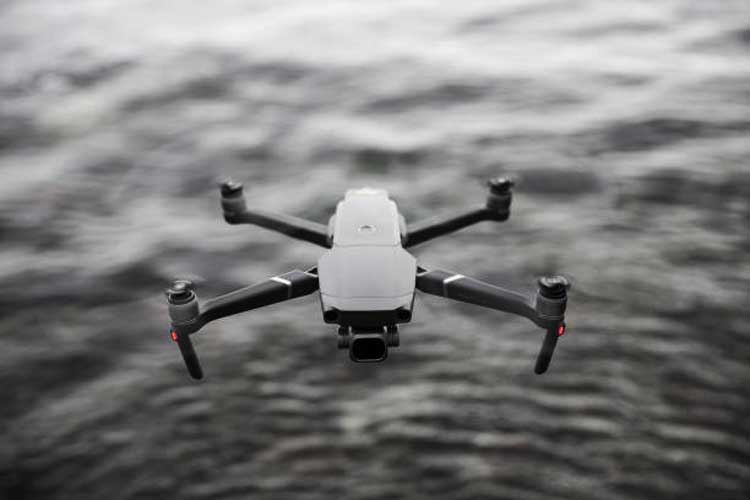Flying a drone over the water to take pictures of the sunset or sunrise is really fun as a recreation. But flying a drone over water carries greater risks. Such as big waves, swaying boats, strong winds and even birds. DJI as the drone manufacturer itself does not recommend it. However, if you really want to do it, you have to follow these tips to minimize unwanted things. Here are tips for flying a drone over water:
Turn off the Vision Positioning System or VPS
Every DJI drone is definitely equipped with a VPS, this technology functions to map the surface under the drone to help position the drone. When flying over water, sunlight reflecting off the water surface can interfere with this technology. That’s why you have to keep the drone flying at least 2 meters above the water. If you have to fly the drone even lower, it is highly recommended to turn off the VPS feature so that the drone remains stable while hovering. When flying below 2 meters, the drone must fly at medium speed. You also have to monitor the height of the drone so that the plane does not enter the water.
Plan Angel Carefully
It cannot be denied that flying a drone in dangerous places really stimulates your adrenaline and allows you to get special images. However, proper planning can minimize accidents when flying the DJI Mini 2 Drone or other DJI drones. Such as having planned the shooting location, objects, angels and so on.
Enable Maximum Flight Distance
Another tempting thing to try when flying a drone over water is to fly as far as possible. However, to be safer, you should only fly the drone as far as visibility. If you really have to fly long distances, activate the maximum flying distance via DJI GO. Activate this feature, enter a new distance but make sure it doesn’t exceed the range of the remote control.
Practice Flying a Drone
Before you start flying a drone over water, if you are still a beginner, you should practice first in a large area such as a field. Master various ways to fly the DJI MINI 2 Drone or other drones that you have maximum control over, such as taking off, maneuvering and landing. That way you will be more confident and the flight will be safer. When you want to take off, there are two options to start. Take off the drone from the ground or from a boat/ship. Flying from the ground is no different from flying a regular drone. However, if you take off from a ship, you have to be more careful, try to wait for the ship to be completely still and stable.
Update Home Point Manually
When flying over land, Home Point is usually where the plane starts to take off. The drone will use GPS and compass to record the location of the Home Point. When you take off from a boat, this can be quite difficult for the drone because the boat will continue to move. Therefore, it is necessary to reset the starting point which can be done in two ways. • First, open the DJI GO 4 application, swipe left on the main screen and press Home Point. • Second, open general settings by clicking the three dots in the top right corner. • Then click Main Controller Settings then click Home Point which uses the icon of a person with a dot.
Avoid Obstacles
Battery capacity also plays an important role in drone flight. Many people can’t wait for the battery to fill up quickly when they are going on a flight. Especially if the person is in a hurry when they want to fly the drone. This can also be dangerous for the drone because the battery is not full enough when flying. Especially for the DJI drone type which requires full maximum voltage cells. So every time you fly a drone, the battery must always be full. • Objects that interfere with the compass and GPS. GPS and compass signals are very necessary for drones to operate. To avoid compass and GPS signals, make sure you fly away from anything that interferes with the signal. Such as lighthouses, container ships and so on that use WiFi, magnets and antennas. • Objects Around the Location Natural objects that can interfere with you flying the drone such as towering trees, small wires or cables that may not be visible to the eye. Also keep an eye out for free-flying birds, as well as insect nests that might be hit by the drone. • Water When you fly a drone over water at a low position, the drone could be splashed by water or hit by sudden waves. As a drone pilot, you must have good reflexes to save the drone. • Other Ships The presence of other ships will also interfere with you flying the drone. Don’t fly too close to other ships because they could crash or interfere with the GPS signal. Set the height higher as a form of precaution.
Flying a Drone Use Intelligent Flight Mode
By using this mode, it allows you to make recordings like a professional with a few finger gestures. One feature that will be very helpful is Course Lock, which allows you to set a flight path in advance.
Pay Attention to Wind Speed
Pay attention to the blowing wind, because strong winds will make the drone less stable and also cause more battery consumption. The blowing wind is more difficult to avoid and the further the drone flies, the stronger the wind blows. If you feel strong winds on land, it is likely that the winds above are much stronger.
Try to fly with a full battery
Flying a drone over water is indeed dangerous, but flying with a battery that is not fully charged over water is much more dangerous. With various obstacles encountered such as trees and strong winds, it will drain the battery quite a lot. Flying over water also causes the drone to land in a truly safe place.

